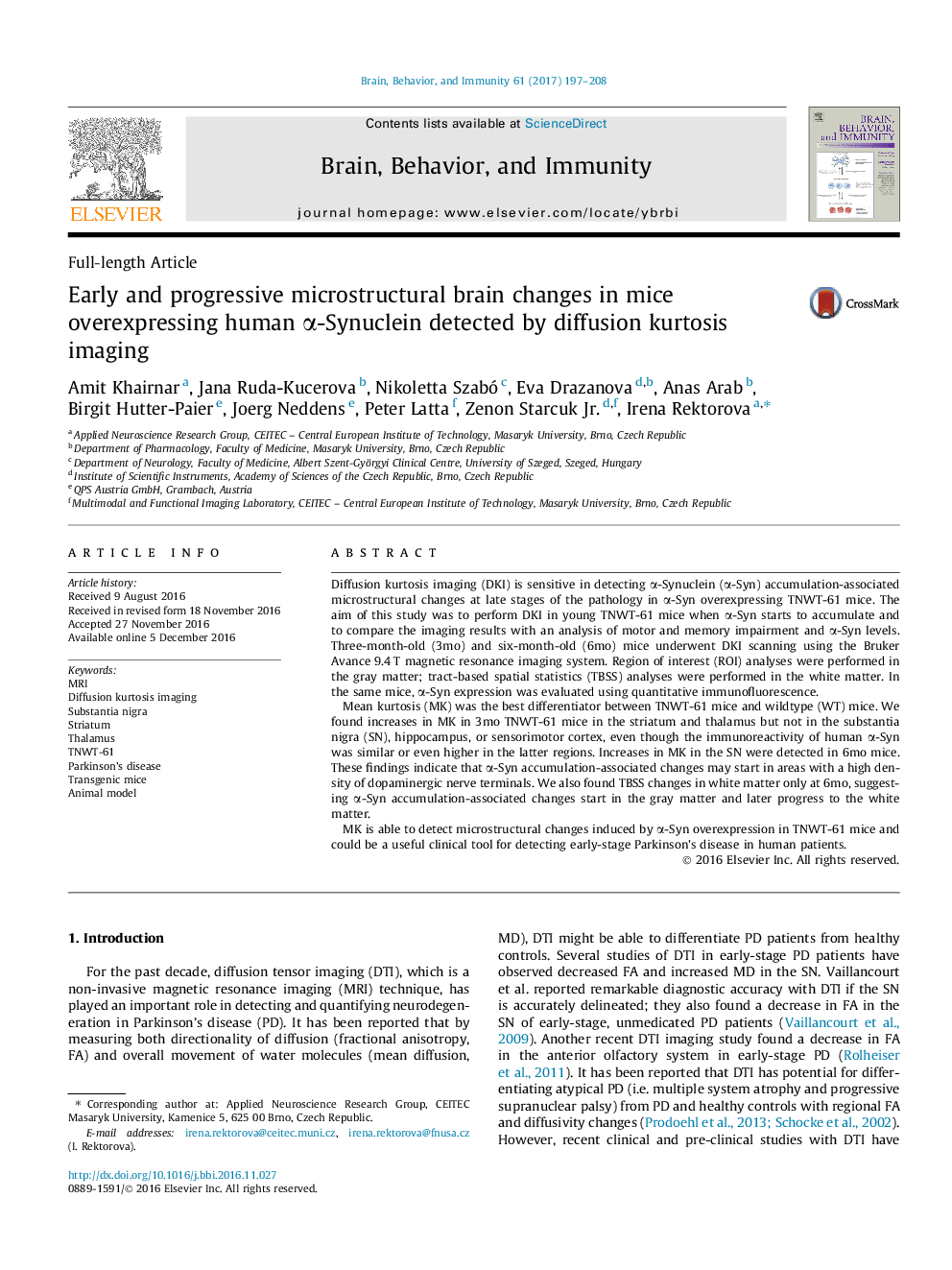| کد مقاله | کد نشریه | سال انتشار | مقاله انگلیسی | نسخه تمام متن |
|---|---|---|---|---|
| 5040702 | 1473906 | 2017 | 12 صفحه PDF | دانلود رایگان |

- Mean kurtosis is sensitive to detect early α-Syn accumulation associated changes.
- Mean kurtosis might be best differentiator between gray and white matter changes.
- DKI may help in early diagnosis of Parkinson's disease patients.
- DKI might be sensitive to detect progression of pathology in Parkinson's disease.
Diffusion kurtosis imaging (DKI) is sensitive in detecting α-Synuclein (α-Syn) accumulation-associated microstructural changes at late stages of the pathology in α-Syn overexpressing TNWT-61 mice. The aim of this study was to perform DKI in young TNWT-61 mice when α-Syn starts to accumulate and to compare the imaging results with an analysis of motor and memory impairment and α-Syn levels. Three-month-old (3mo) and six-month-old (6mo) mice underwent DKI scanning using the Bruker Avance 9.4 T magnetic resonance imaging system. Region of interest (ROI) analyses were performed in the gray matter; tract-based spatial statistics (TBSS) analyses were performed in the white matter. In the same mice, α-Syn expression was evaluated using quantitative immunofluorescence.Mean kurtosis (MK) was the best differentiator between TNWT-61 mice and wildtype (WT) mice. We found increases in MK in 3mo TNWT-61 mice in the striatum and thalamus but not in the substantia nigra (SN), hippocampus, or sensorimotor cortex, even though the immunoreactivity of human α-Syn was similar or even higher in the latter regions. Increases in MK in the SN were detected in 6mo mice. These findings indicate that α-Syn accumulation-associated changes may start in areas with a high density of dopaminergic nerve terminals. We also found TBSS changes in white matter only at 6mo, suggesting α-Syn accumulation-associated changes start in the gray matter and later progress to the white matter.MK is able to detect microstructural changes induced by α-Syn overexpression in TNWT-61 mice and could be a useful clinical tool for detecting early-stage Parkinson's disease in human patients.
Journal: Brain, Behavior, and Immunity - Volume 61, March 2017, Pages 197-208